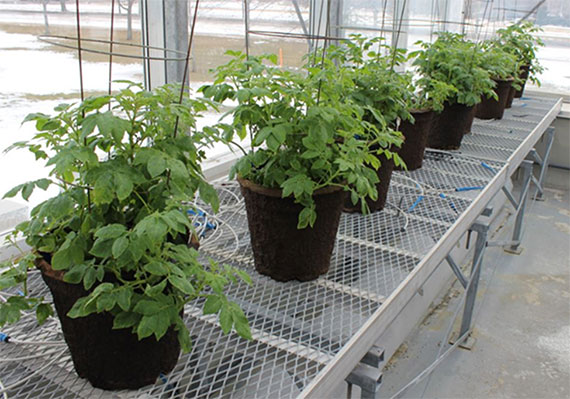While it's often referred to as the "humble potato," in reality, the potato is something of a superstar, especially in Canada. Potatoes are the single biggest vegetable crop grown in Canada, accounting for more than a quarter of all vegetable receipts—some $1.3 billion a year.
Canada is also a major player in the global market, with exports of potatoes and potato products, such as frozen French fries, valued at nearly $2 billion in the 2019-2020 crop year.Footnote 1
These are big numbers, and new research funded by the Government of Canada's Genomics Research and Development Initiative (GRDI) will help to ensure they continue to grow.
New varieties offer benefits and risks
To maintain and expand their business, Canadian potato growers are constantly on the lookout for new varieties that produce higher yield, are more resistant to drought and diseases, or offer more of the consistent shape and texture that processors of French fries, potato chips and other products are looking for.
Along with the potential benefits, Canadian Food Inspection Agency (CFIA) Research Scientist Dr. Huimin Xu notes that importing new varieties carry a risk of also importing diseases that can destroy a crop and Canada's reputation as an exporter of disease-free potatoes.
"That's one of our key responsibilities here at the CFIA Charlottetown Labs. We oversee and facilitate the CFIA's Potato Post-Entry Quarantine Program," says Dr. Xu. "Potato germplasm arriving from other countries have to be quarantined and checked for diseases before they can be released for use in Canada. We also check potatoes destined for export to ensure they meet other countries' import regulations. In doing so, we fulfill Canadian responsibilities and commitments to the global community for preventing the spread of potato pests."
A time consuming process

Current testing for viruses in imported potato plants frequently involves growing several species of so-called "indicator plants" from seed, inoculating them with sap from the imported plant, and watching for symptoms of disease—a labour-intensive process that takes months to get results. (photo: CFIA)
At CFIA headquarters in Ottawa, Program Specialist Peter Volney says the post-entry program is essential to protect the Canadian potato industry, but it can nonetheless be something of a bottleneck for producers eager to get new varieties into their fields.
"There are 50 or more pathogens that can infect potatoes," says Mr. Volney, "At the moment, only a dozen or so can be detected with existing lab tests. For the others, the testing means growing examples of 17 indicator species of plants from seed, inoculating them with sap from the imported potato plant, and waiting to see if any of them develop symptoms of disease. This is both labour-intensive and time‑consuming—it can take several months to see the results."
Higher speed, lower cost
The key words are "at the moment." With the application of advanced genomic technologies enabled by a GRDI investment, Dr. Xu has developed a new testing protocol that detects the nucleic acids (NA) of all viruses and viroids in a plant sample in as little as 24 hours—less labour, less time and less cost than any other test currently available. In addition, the test can be applied to a variety of plant material, from leaves to botanical seeds.
"Once we have nucleic acids from all the viruses and viroids in a sample, it is a relatively simple matter to compare that to the sequences of known viruses and viroids to identify what, if any, diseases the plant we're testing may be carrying," says Dr. Xu. "It's faster, it's cheaper and we can have a lot of confidence in the results."
Since detecting virus and viroid sequences in a plant sample is only part of the process (you need something to compare it to in order to identify exactly which viruses or viroids are present) Dr. Xu has collaborated with researchers at Agriculture and Agri-Food Canada and the University of Guelph, as well as scientists in the U.S., the U.K and the Netherlands, among others, to assemble a library of strains or isolates from a wide range of potato viruses and viroids detected and characterized around the world. This collaboration sets the stage for future international acceptance of these innovative test methods.
Versatility adds to value of GRDI investment
In his GRDI research, Dr. Xu has demonstrated that the same advanced genomics test method he developed to detect and identify potato viruses and viroids can be adapted for use with other plant species, and has already been used successfully in testing tomatoes and peppers for virus and viroid diseases, and is now used routinely in CFIA Charlottetown Laboratory to detect viruses and viroids in tomato and pepper materials for import surveillance and export certification.